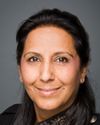That's a great question.
In the 1976 Olympics, if I remember the numbers well, Australia won only three medals. In 1979 a federal MP stood up in the House and said that it was un-Australian not to be a powerhouse in sport for any Australian. So they built the Australian Institute of Sport in Canberra, which is where I ended up working for several years. Basically, it became a vision from the top down, and schools embarked on it, and all of a sudden, because of that, so many other things fell into place. A company called Telstra actually would give any of their employees who were volunteers two paid hours out of their 40-hour week to coach little kids soccer or whatever. It became a national vision, and everything else fell into place.
I can tell you that my kids had mandated physical education all the way through high school. I think it is one of the major issues, especially for girls, because often programs are left to choice. A lot of girls don't want to get sweaty in high school, so the habits of fitness for girls are not as good. I think we have to work on that.
I know that education is a provincial program, but I also believe that people will embark on it if the vision is created for a nation.
To go back to the Australian model, another aspect is that they are 20 years ahead of us, and we're eating away at it two years at a time to get closer to them. The key is not to just get closer to them but to get much better than they are. Our coaching education system is the best in the world, but we just don't have enough people to coach the coaches.
I live in Chelsea, just north of here. We have 1,000 kids, out of 7,000 people, who play soccer. We can't find enough coaches and dads and moms. If I happen to drive by the soccer field, they'll lasso me in to coach soccer, and I know nothing about soccer. That's how desperate some of them are, including for hockey. We have to work at building the base.
The other aspect would be to entice universities to have programs in physical education that specialize in coaching, not just in physical education, for example. There are only a few universities in Canada that do that.






